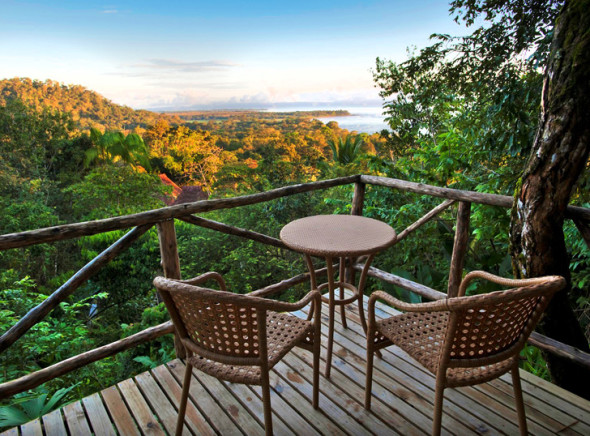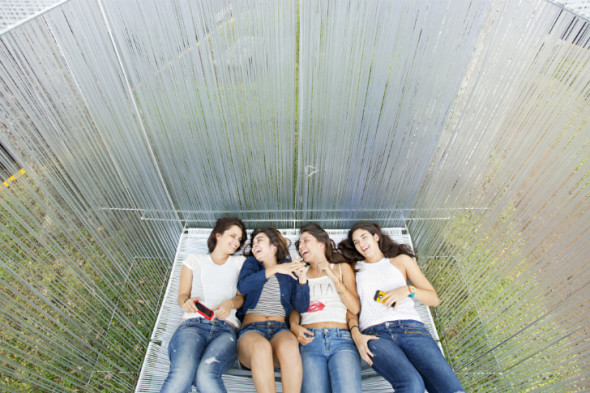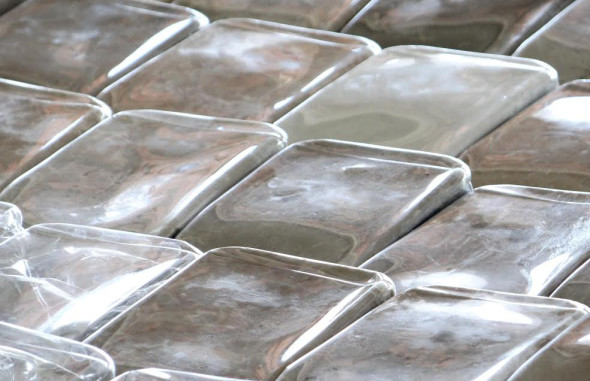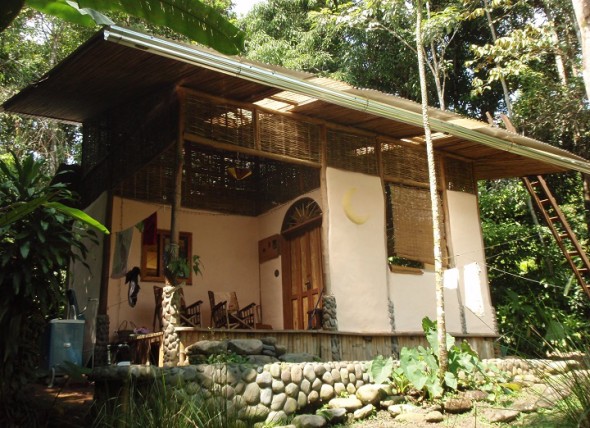Does an environmentally friendly resort make you think of pig waste? Probably not, but the Lapa Rios Eco Lodge uses pig poo bio-gas to power their kitchen. In addition to that, the resort, which was originally established as a nature reserve, uses energy from solar panels, recycles 80% of its kitchen waste (either composting food scraps or sending them to the pig farm), uses fully renewable construction materials in its buildings, hires local workers, and supports the local community’s school through funding.
Blog
Postcard from Costa Rica
There’s nothing I love more than a fiddlehead, perfectly curled with potential and about to unfurl into full-leafed beauty. Maybe I have a special place in my heart for ferns. They blanket the forest floor in my woods at home and my father used to dig one or two up and bring them home and plant them in pots. I love looking up toward the sky through the leaves of a tree fern, its umbrella-like leaves silhouetted like lace, with sunlight climbing through to the forest floor below. Where I live in Vermont, it is spring, and the fiddleheads are in abundance, sold at farmers’ markets to be boiled, then sauteed, and eaten as a tasty springtime delicacy. This fiddlehead is from the side of a trail in a Costa Rican rainforest, where the humidity and moisture provide the perfect, cool dampness that ferns love. Its curves collect the rainforest’s beauty like a small treasure.
Hideaways
Benjamin Garcia Saxe, designer of the bamboo-ring house, worked with Laura Morelli and students during a workshop at Universidad Veritas in San Jose, Costa Rica, to design and build a project with limited resources and with the goal of creating a space and eliciting human emotions. Wanting to convey light, space, and movement, the team placed this pavilion in an abandoned city park. Though it has since been moved to a public space at the university, an original goal was to get people to visit a forgotten place and see it through new eyes. Called “Cascades of Light,” the pavilion is built with metal framework and recycled plastic string. From within the pavilion, visitors can relax on the hammock-like structure, see the leaves of the trees and the sky above, and enjoy the light filtering through the plastic strings.
From Water Bottles to Roof Tiles
Donald Thomson and his wife Terry-Lee, who have lived in Costa Rica since 1990, began organizing a volunteer beach-cleaning initiative to clean up the massive amounts of plastic that washed up on the beaches of Playa Pochote. After watching children jumping on the plastic bottles to flatten them, Thomson had an idea: to recycle plastic into building materials for low-income families.
Agua Costa Rica, Thomson’s company, uses recycled plastic to create bottles which are filled with water collected near Juan Castro Blanco National Park. After use, the bottles are collected and pressed into granite-colored tiles. Reused packing materials are injected into the the bottles to serve as an insulator and add color. The bottles of water will be sold with a small deposit to encourage buyers to recycle them. Thomson calls the process “out-cycling”: taking a waste product (plastic), turning it into a new product (recycled plastic bottles), and then turning it into another product (the roof tiles).
Postcard from Costa Rica
At the fruit stand, I was in heaven. I ate mango: sun-warmed, sweet, juicy, a piece of the sun and earth. With sticky fingers, I tried guayaba, tough, seemingly unripe, and filled with small, hard seeds. The caimito, a fruit I had never seen before, was three consecutive experiences. First: soft and sweet, tender; second: even sweeter, like the brown sugar of a bruised apple; third: bitter, like the core. Piña and papaya and melón remained on my tongue with their sweetness.
Hideaways
A design and construction firm called Bamboo Groove builds homes from insulated shipping containers and bamboo. This design gives Intermodel Steel Building Units (ISBUs) a second life. These container houses are built to insulate from the heat and provide natural ventilation for cooling. Guadua bamboo, one of the fastest growing bamboos, is harvested locally in Costa Rica and used to complete the roof and other elements of the home. Other sustainable features of these designs include rain water harvesting, highest thermal insulating capacity, re-use of greywater, and solar heating for hot water and radial floor heating. And because the building materials are reused and sustainable, the building costs are reduced.
Postcard from Costa Rica
I found several beautiful green feathers littered on the forest floor before I found the Emerald Toucanet (Aulacorhynchus prasinus) camouflaged amidst the green leaves of the canopy. Smaller than the colorful Keel-billed Toucans we saw flying over an open field, these birds still have impressive beaks, used to pick fruit and capture invertebrates such as spiders and beetles. I watched it buzz about, flying back and forth and landing on the trees’ branches while foraging. Green is the perfect color for a rainforest bird.
Hideaways
Tim and Robin O’Hara of Rancho Mastatal, an environmental learning and sustainable living center, used Robin’s design to build their home out of cob, wattle and daub, lime plasters, bamboo, locally milled wood, and recycled fence posts. A cob house is made from subsoil, water, and fibrous organic material such as straw. Sourced from local materials, cob houses are sustainable in terms of resource use and energy efficiency. Because the cob walls act as a thermal mass, the house is kept warm by passive solar heating, as the walls absorb sunlight during the day. The house is also kept cool during hotter temperatures. With earthen floors, an outdoor shower, a composting toilet, renewable energy systems, and locally grown food, this sustainable home and environmental learning center has stunning views of La Cangreja National Park.












